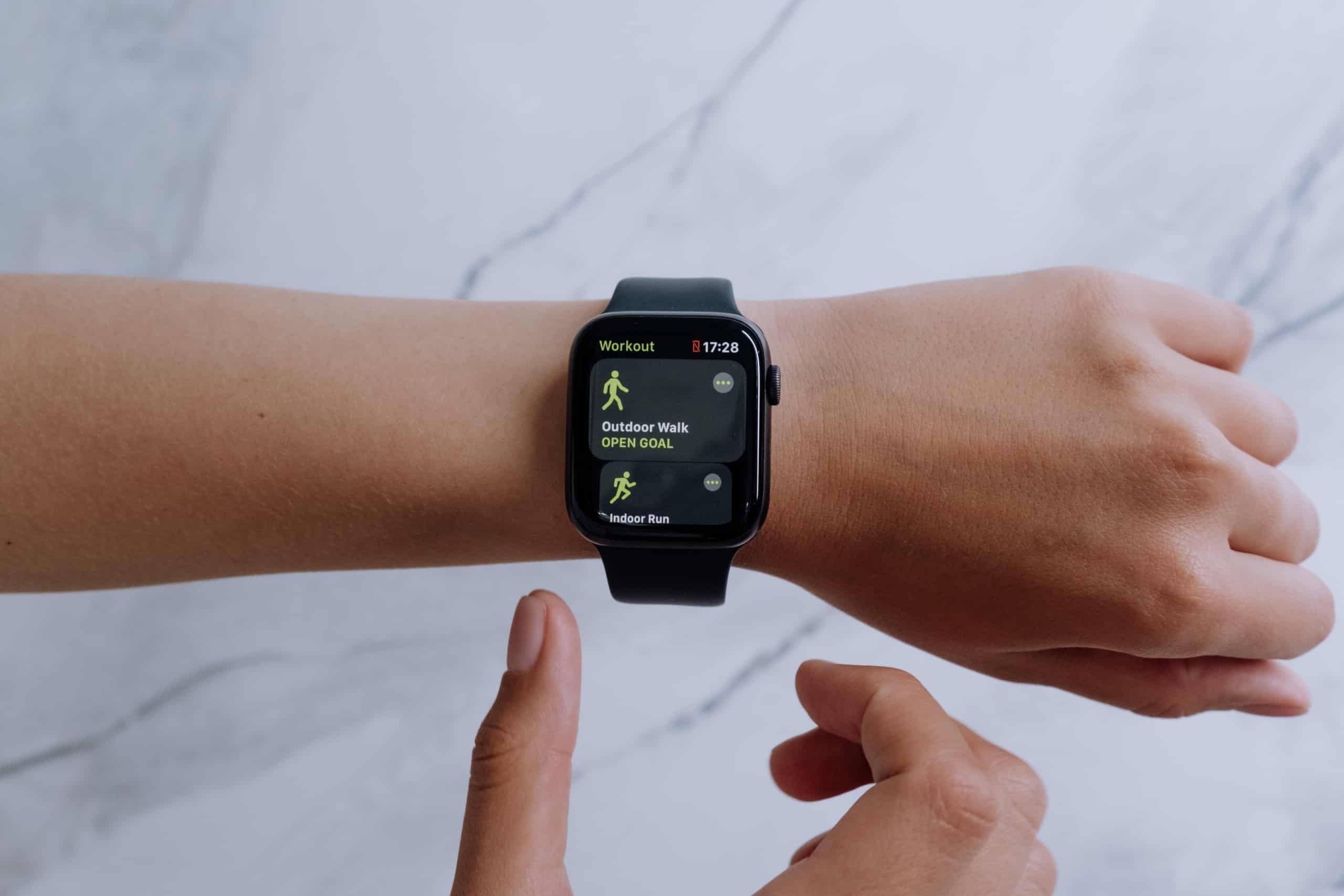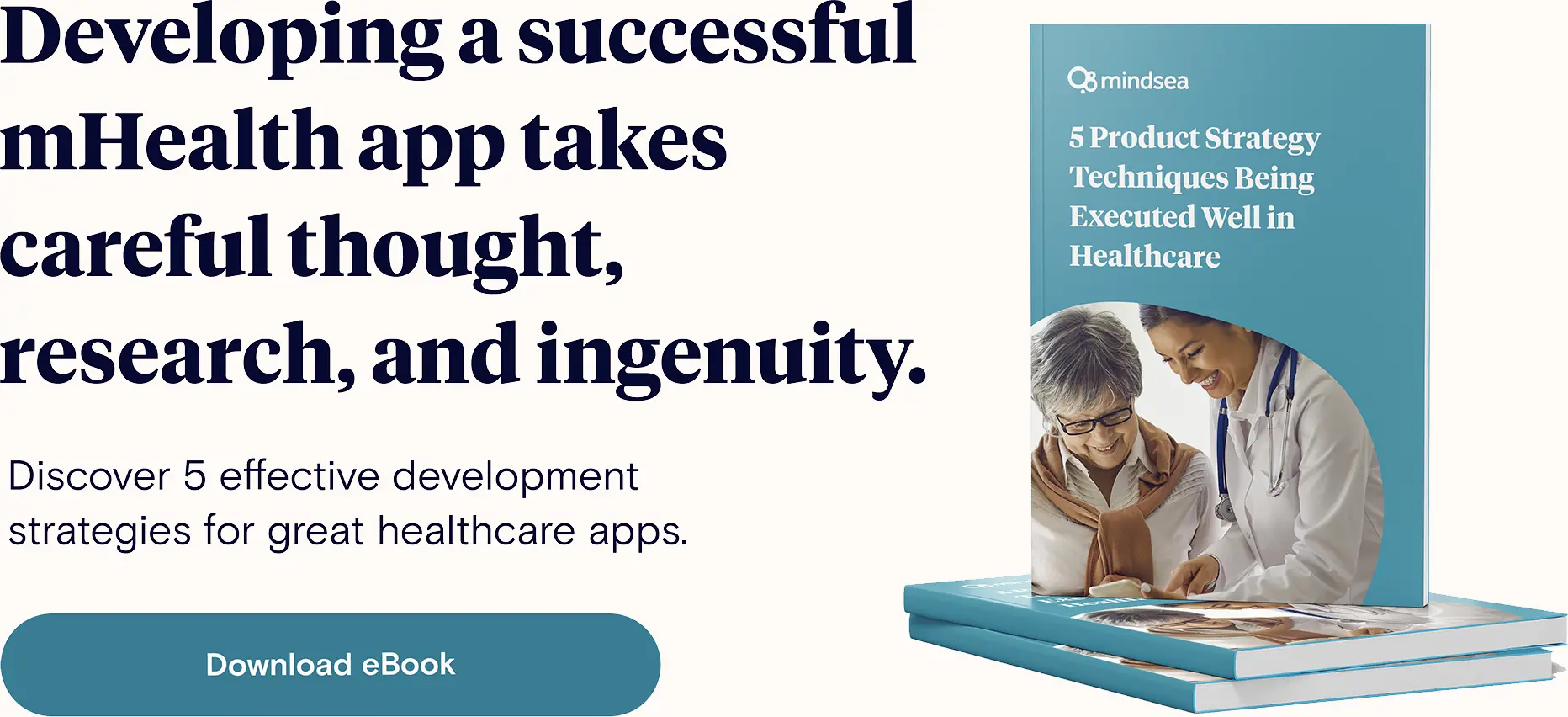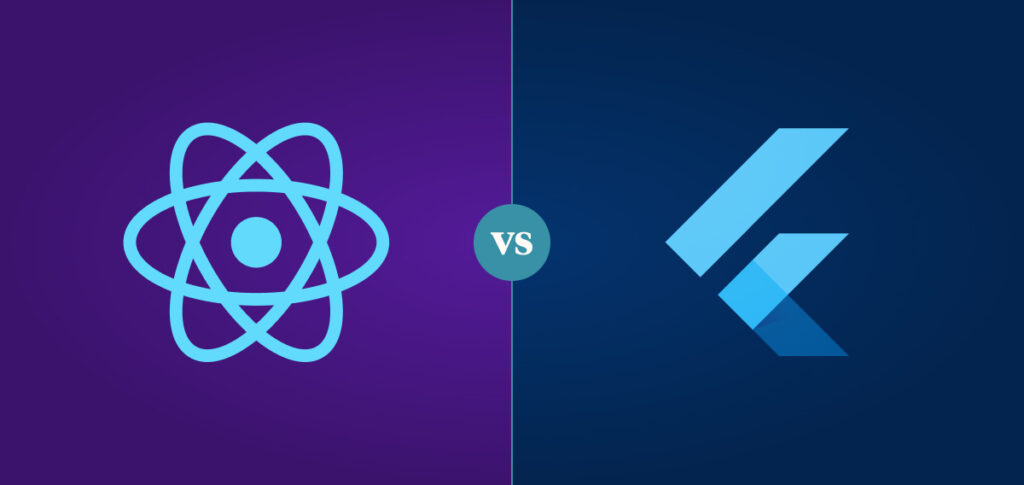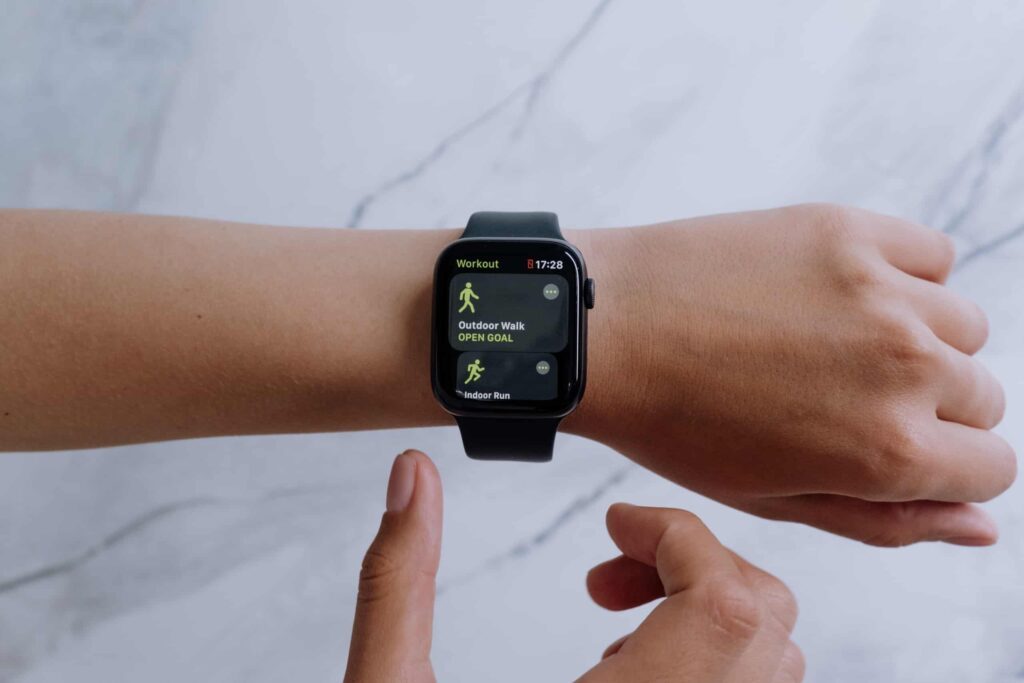Previous articles in this series looked at mobile app development in terms of the raw data available from the sensors that are built into smartphones, as well as the increasing role of connected wearables and other smart external devices.
This post tackles the major topics of integrating Android Health Connect and Apple Health – the two most significant and widespread platforms for sourcing and contextualizing health, wellness, and fitness data.
If you are interested in creating a health-related mobile app, what do you really need to know about the two major health and fitness platforms?
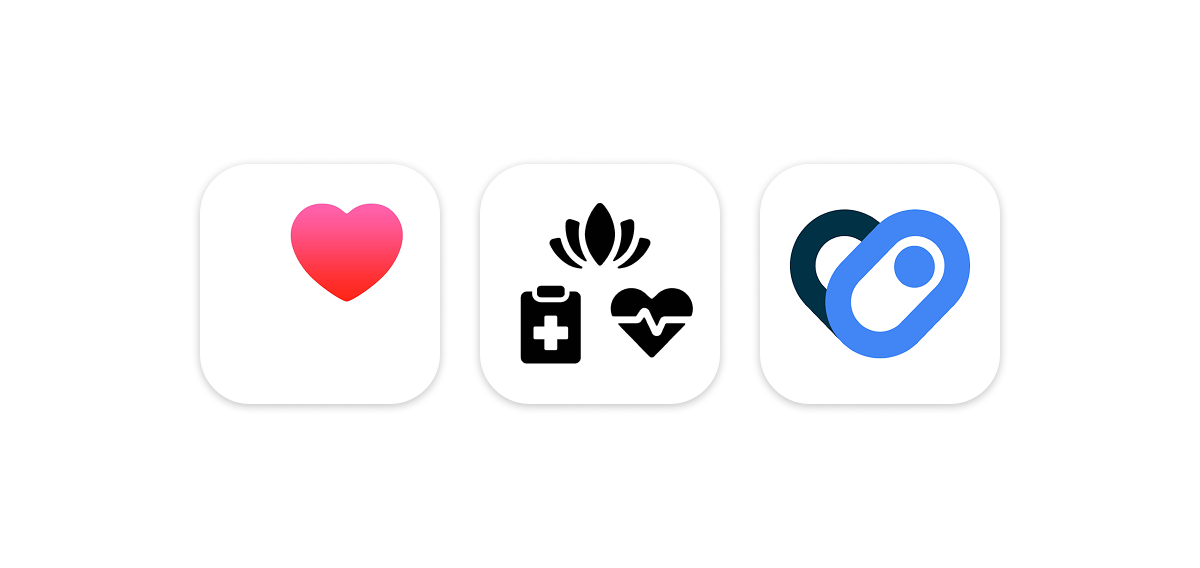
The Platforms: Android Health Connect and Apple Health
These platforms can help your app get instant liftoff. Both Android Health Connect and Apple Health are free and in use by millions of people. Apple Health comes pre-installed on iOS smartphones and watches, and Android Health Connect is a free download from the Google Play Store. The compatibility of your app with one (or both) adds value for mobile phone consumers.
Android Health Connect is available for Android devices. Health Connect is a secure, central repository that stores data from the various health and fitness apps on a user’s device. If a health and fitness app supports Health Connect, users can choose which data from the app can be accessed and stored by Health Connect. Users can browse the raw data entries that have been stored in Health Connect, but Health Connect does not visualize this data. Instead, users choose a favourite health and fitness app or two (and which data these apps are allowed to access), and Health Connect will funnel its stored data into those apps for visualization. Users can change these app permissions at any time.
Apple Health is an app available for iOS devices. Similarly to Android Health Connect, Apple HealthKit is a secure, central repository that stores data from the various health and fitness apps on a user’s device. In addition, HealthKit automatically tracks steps on iPhone or iPad, and automatically tracks Activity data on Apple Watch. While Android Health Connect does not visualize its stored data, Apple HealthKit does, through the Apple Health app. Apple Health has many features, including interactive charts that show health data over time; the sharing of health data with close family, friends, or care providers; and downloading and updating clinical records from healthcare institutions.
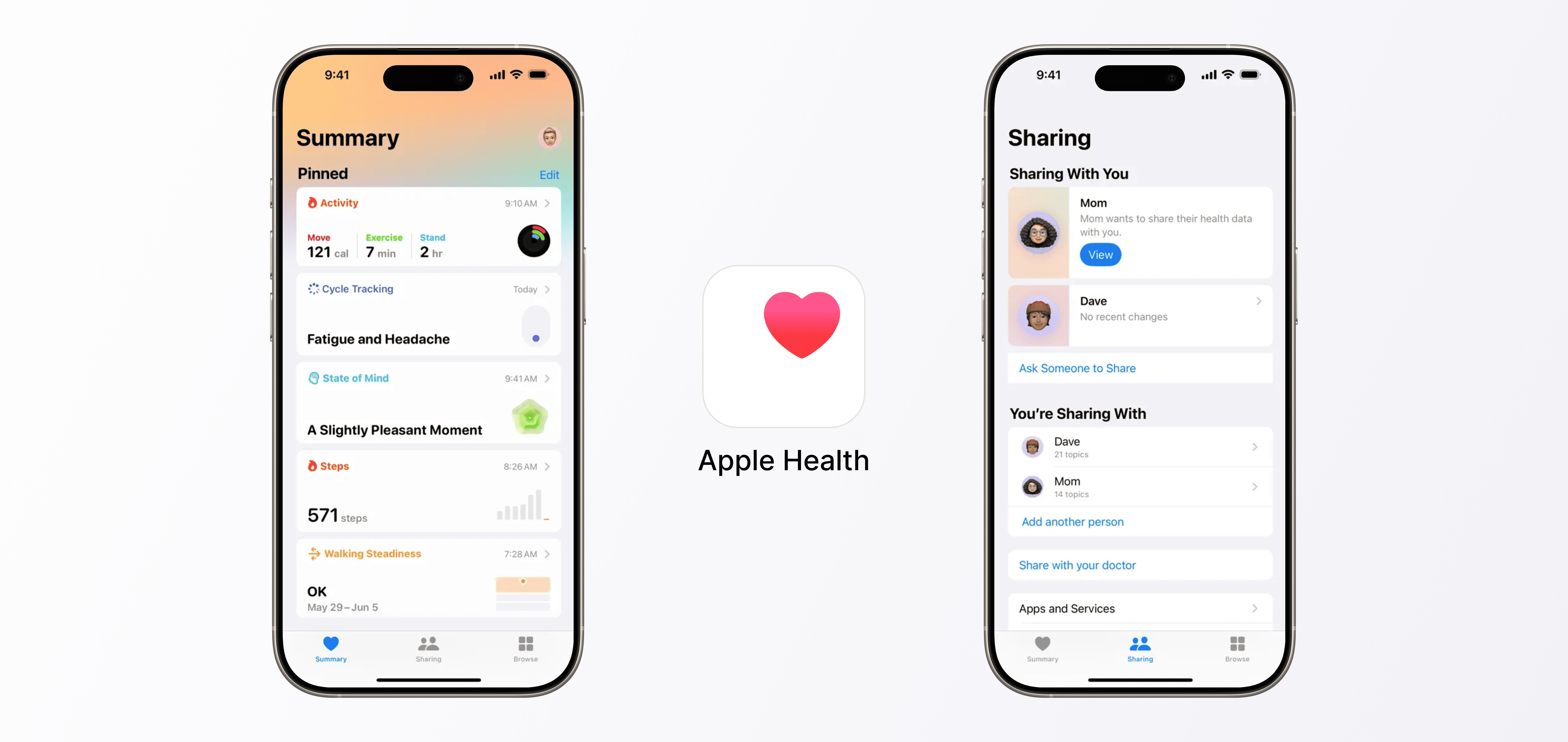
While Apple Health utilizes information from smartphone sensors, much of the functionality depends on pairing with Apple Watches. Both Apple Health and Android Health Connect collect data from various smartwatches and fitness trackers through their proprietary apps. Leading health and fitness apps that can be linked together with Health Connect include MyFitnessPal, Fitbit, and Samsung Health. Strava and Garmin Connect do not link directly to Health Connect, but third-party syncing apps can be used, such as Health Sync. Health and fitness apps that are compatible with Apple Health include Strava, Garmin Connect, and MyFitnessPal. Fitbit does not link directly to Apple Health, but a third-party syncing app can be used to facilitate this, such as Sync Solver.
These two platforms have a lot in common. They are competing in much the same space, using very similar methods, and in a changing, shifting landscape.
If a feature that you want to create in your app depends on data that is only collected via the tools of iOS or Android devices, you may decide to create only one version. Your mobile app could be designed for use on either Apple iOS or Android smartphones, or you could produce a version of each. The other option is to develop a cross-platform app with slightly different features using a development framework like React Native, Ionic, or Flutter.
The History of Android Health Connect
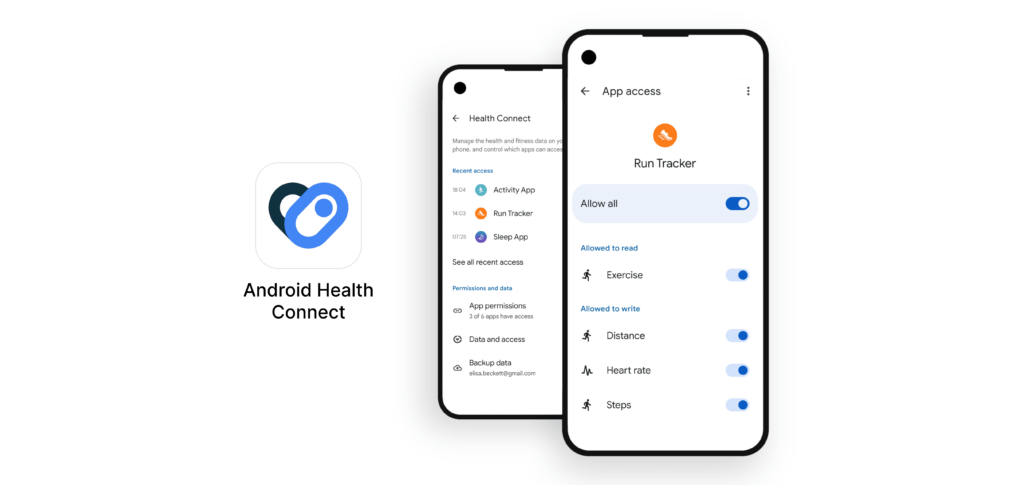
Google announced in 2022 that Android Health Connect was in development, and in March 2024 there was a beta release of Health Connect in Google Play. Starting in Android 14, Health Connect is part of the Android operating system and is accessible in Settings. In Android 13 or lower versions that are supported, Health Connect is a publicly available app on the Google Play Store.
Prior to the development of Android Health Connect, there was Google Fit. The Google Fit app was first released in October 2014 (just a few weeks after the release of Apple Health) and is the Android equivalent to the Apple Health app for iOS. The Google Fit app focuses first of all on the frequency and intensity of physical activity using point systems. Other associated areas like nutrition, hydration, and sleep depend on user self-reporting or connected apps. The Google Fit SDK (Software Development Kit) is the Android equivalent to Apple HealthKit for iOS, and is what allowed for the sharing of health and fitness data between Android apps. At the same time as Google announced the development of Android Health Connect in 2022, they also announced the depreciation of Google Fit in 2025.
With the move to Android Health Connect, Google is signaling to users that they place great importance on privacy and security. While Google Fit stored data in the cloud, Android Health Connect stores data locally on Android devices and encrypts that data for additional security. Apple HealthKit also stores data locally on iOS devices with encryption.
Behind the Platforms: Data Integration Hubs, SDKs, APIs
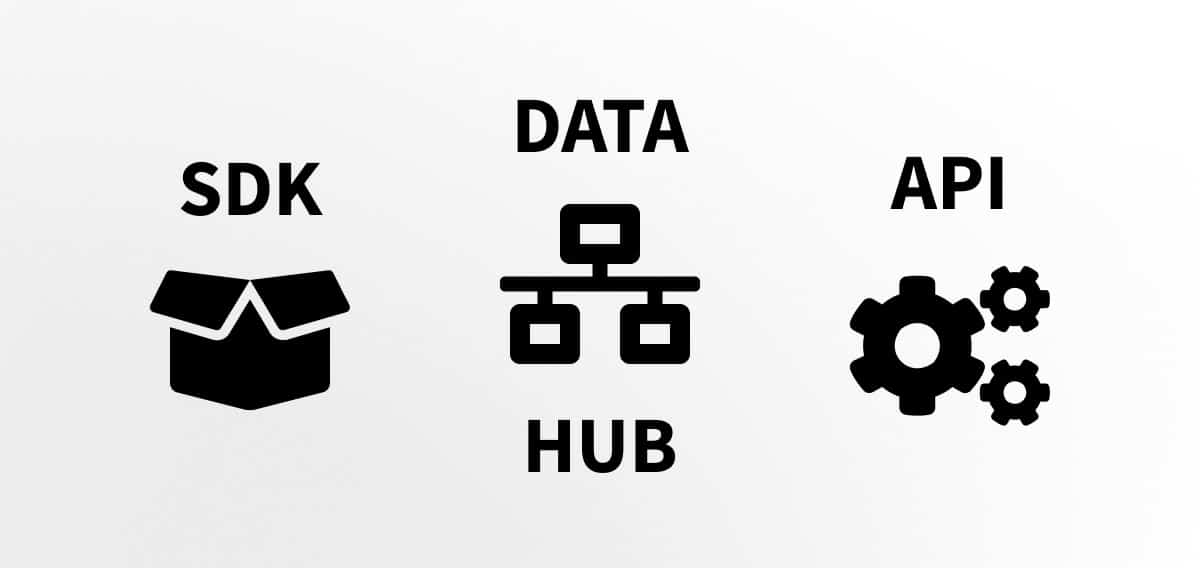
On the back end, Android Heath Connect and Apple HealthKit are secure open-source integration platforms that collect, organize, store, and track the health and fitness data from multiple services and applications. That’s where they become interesting for mobile app development.
Both platforms were architected to make data sharing and storing easier for developers. In addition to collecting vital user data needed for functionality, much of the development work for obtaining and sharing structured data has already been done. If your app meets certain criteria (more on that later), you can utilize the resources of the open-source software development kits and the platform APIs to support additional services.
The SDK (Software Development Kit) – or “Kit” for short – refers to the whole open-source platform that provides the tools and documentation that allow for the creation of applications. SDKs are organized in terms of intended operating systems, programming languages, and type of APIs (Android, REST) for the in-scope hardware.
About Apple HealthKit:
- Apple HealthKit and HealthKitUI frameworks are available for iOS 8.0+, iPadOS 8.0+, Mac Catalyst 17.0+, macOS 14.0+, visionOS 1.0+, and watchOS 2.0+.
- Swift is the primary programming language while Objective-C is still supported and used for maintaining legacy apps.
- Health data is securely stored on the device itself, encrypted for privacy, with the option to back up and sync across devices via iCloud.
About Health Connect SDK:
- Health Connect SDK is available for Android 8.0+ and Wear OS 8.0+. It is compatible with any Android-powered device, including smartphones, tablets, smartwatches, and Wear OS devices, as long as it is running Android 8.0 or later.
- Kotlin is the recommended programming language while Java is also supported to maintain existing Android apps.
- Health data is securely stored locally on the device, with optional syncing across devices like smartphones and Wear OS devices. The core data stays on the device.
APIs (Application Programming Interfaces) allow for the functioning of applications within the SDKs defined parameters and are what enable blending data from multiple apps and devices. The API is simply an interface that allows software to interact with other software, a set of public methods and properties that interact with objects in your application. Mobile apps can read data via APIs from dedicated URLs that return structured data “objects” that can interact with one another. Users decide the scope of permissions in terms of which kinds of data may be shared with specific apps and services.
Subclasses of data types define the schemas for a stream of data being collected by, inserted into, or queried. A data type can contain one or more fields, from stable data to complex data types that combine samples of data or compute aggregate values over sets of samples. Sources of data are identified, whether they are phone sensors, wearable devices, user input, connected apps and services, or data transformations on these.
Apple HealthKit vs Android Health Connect Data: What Data Matters Most for Your App?

What kinds of data exist or are provided for by each platform, and how are they organized?
Pro-tip: Start thinking about what services your app could provide in this kind of space:
- What kinds of data might your app require, and why?
- From what source or sources would that data originate – user self-reporting, Android and/or iOS smartphone sensors, watches/fitness trackers, Bluetooth-enabled external devices?
- Will the app require the use of data that is sensitive, protected or restricted? How might you use or create calculations, correlations, aggregations, interpretations?
Some kinds of metadata can be added to both platforms or within your own app. Here, you’d really need to consult with developers on best practices for utilizing the platforms.
As an illustration of the kinds of things that are possible, consider weightlifting. A user may add a workout session under a weightlifting category, and track some basic metrics about heart rate, exertion, duration, and the like.
However, additional workout activity variables are already available to be used as structured data. Specialized enthusiasts would want to use those variables to produce more meaningful analysis, perhaps to track combinations of repetitions, sets, weights, and types of exercises toward goals. Apps such as Strong have taken advantage of that expanded data set and added their own features to it.

Health Data Can Be Leveraged Across Apps
In new mobile apps, nutritional information can likewise be repurposed and expanded for customized dietary plans. Water intake can be recontextualized for use cases like camping trip inventory planning, and depletion of stores. The whole health and fitness quadrant could be made a part of a more encompassing smart home dashboard keyed to each household member.
Privacy, Access, Policies: Reading and Writing Data to Android Health Connect or Apple HealthKit

Your app’s ability to obtain, hold, or share types of data is determined by many factors. User consent, privacy, security and other related app development guidelines are reviewed and enforced by Google, Apple, and governmental authorities. Some data is classified as restricted, protected, or sensitive. Some data can be written, but not read by other apps. Some user data is not available for use at all, and some user data is tied to the larger ecosystems of Google or Apple services.
Start with a Streamlined Approach
If your app is intended to fit into the health and fitness vertical, start with the bare minimum of metrics that you would need for your app to function in its intended way. Even with just a few data points and other features, new apps can provide valuable services.
If your app is focused on exercise, weight management, nutrition, or standard physical activity tracking, then you can drive value by articulating how exactly your app will use the architectural capabilities of either platform. Fitness-related apps can provide additional value, such as balancing activity types or comparing the results of different strategies toward fitness goals. The bar is higher for medical apps, such as those that might be used for diagnostics, remote monitoring, disease management, medication management, or personal health records.
Case Study: Johns Hopkins’ Corrie Health Program
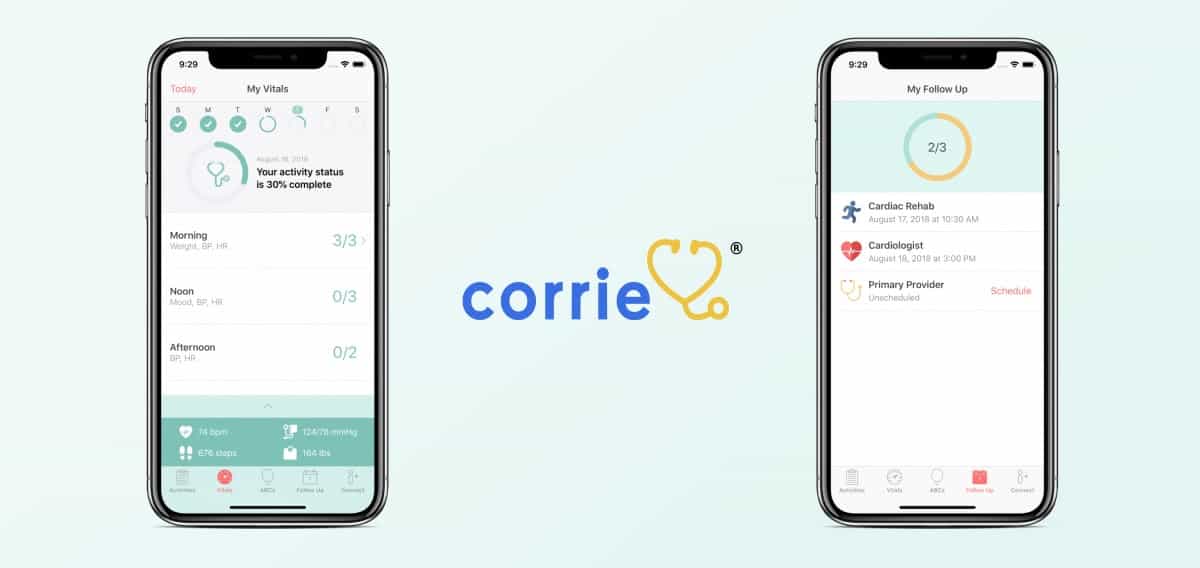
Physicians at the Johns Hopkins University School of Medicine developed the Corrie Health program to achieve remote monitoring, support, and data collection for recovering cardiac patients. For their app, they used data from Apple Watch, and from a Bluetooth blood pressure cuff that writes directly to the Apple Health app and is shared via HealthKit to their own app. They added consent and survey modules from Apple’s ResearchKit, which is intended to help researchers with enrollment, informed consent, and frequent medical information gathering. They also added tasks, contacts, and care plan store modules from CareKit, which helps medical care teams stay connected with patients by making it easier for patients to record and share health data. Patients recorded daily progress on steps, heart rate and blood pressure, and were given resources for recovery on topics like diet, medication, and mindfulness techniques.
In this case, Corrie Health developers made an initial ecosystem choice: for Apple iOS devices and the Apple Health-related SDKs, including HealthKit. A second version released in the Google Play store allows their patients to use Android smartphones and substitutes Fitbit Versa in place of the Apple Watch and blood pressure cuff. Since none of the data was used for diagnostic purposes, but only for communication, encouragement, and basic aftercare, they were able to provide services to their patients without having to confront some of the regulatory difficulties involved with the use of strictly medical devices and apps. Still, this application may have been marketed in an overly medical fashion to be acceptable to Google Fit; it doesn’t appear to be integrated or compatible.
Health apps do need to categorize personal identifiers, health, and medical data differently than fitness data, in order to treat the data with a higher level of security.
Significant opportunities exist for robust apps that would do a better job of integrating or associating data from additional smart external device apps (thermometers, heart rate sensors, scales, and glucose meters) into Android Health Connect and/or Apple Health. Apple Health tends to restrict some external devices in terms of Apple branding and partnerships.
Due to increased caution after a global pandemic, a greater variety of robust non-contact smart thermometers would be helpful, even if that data is not used for official diagnostics. Some manufacturers like Kinsa and Vicks have built out their own apps.
Regulatory Approval Is the Barrier Between a “Wellness” and a “Diagnostics” App
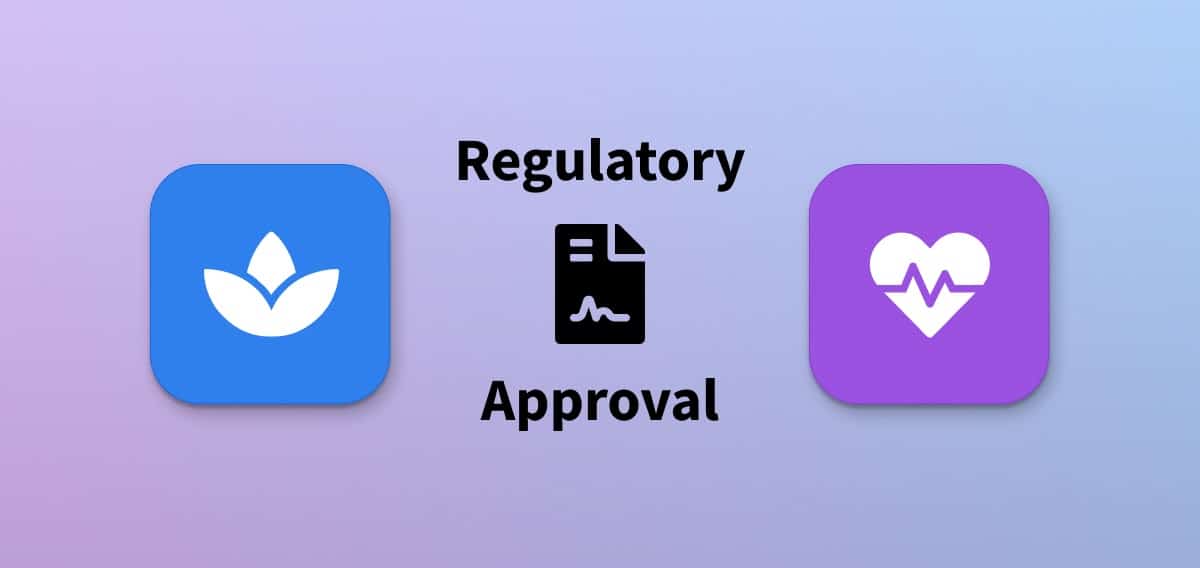
One of the big problems is that without regulatory approvals from governmental entities like the U.S. FDA (Food and Drug Administration), medical devices can only be used as a “wellness” feature, and not for diagnostic medical use. Apple did get clearance to use the EKG feature of the Apple Watch as an early warning of irregular heart rhythms, but only for that scope of use.
The FDA’s Unique Device Identifier (UDI) initiative requires the assignment of a distinctive identification number to all regulated medical devices sold in the United States — from manufacturing through distribution to patient use and digital records.
General health, fitness, and wellness features that are not used to diagnose do not need FDA approval, so Apple, Google, and others are mindful about what is claimed, and how any of this is marketed.
Companies and developers must be aware, and compliant with law and policy when developing and distributing mobile apps. Both Android Health Connect and Apple HealthKit require fine-grained user permissions for reading and sharing data, and a multitude of security, privacy, and access policies and laws come into play for both platforms.
Apple Store review guidelines for mobile apps must be adhered to, and protecting user privacy is of utmost importance. Health data, especially those involving clinical medical records, have significant additional requirements for use. Each time your app requests incremental new permissions, the Health app displays a form to the user with all the requested data types.
For Android Health Connect, Google policies apply, as do policies of the Google Play Store. Health Connect requires explicit user consent for apps and devices to access and share health data. Users can control what data is shared, with whom, and for what purposes. Only necessary data is collected, and apps must disclose their data usage practices. Users can manage and revoke access to their health data through Android settings at any time.
The Changing Landscape of Health and Fitness Tech
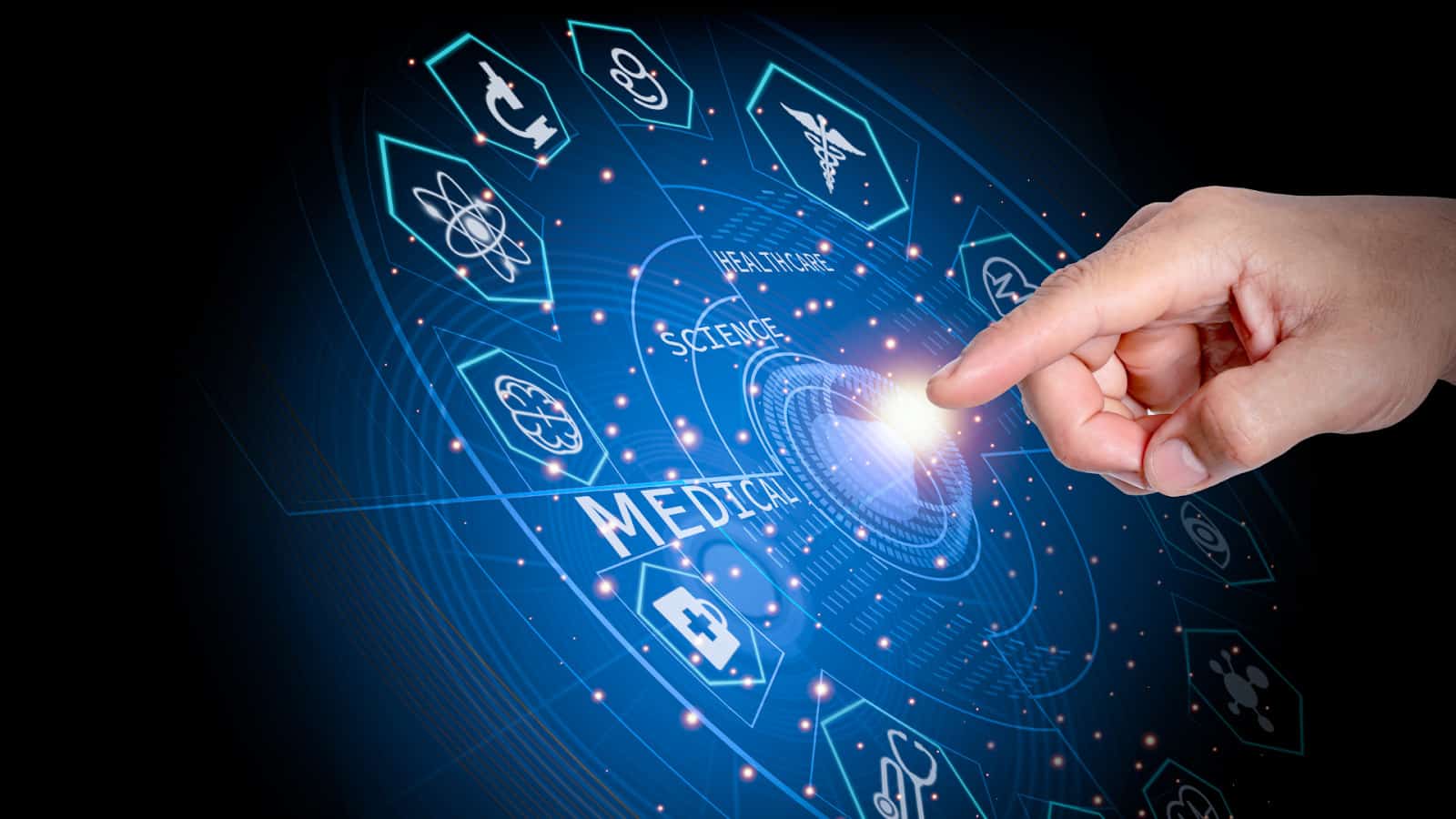
The biggest tech companies are all continuing to develop new tools for consumers, medical professionals, and insurers as healthcare is continually being reshaped. The number of connected devices is already in the billions, increasing the need for smarter methods and platforms of interconnection. Eventually, more apps will seek medical-grade approvals.
A wide range of innovative applications are possible: integrations with hospital software, external device and services integration, AI-driven analysis, health monitoring and alerting, symptom checkers, medication management, risk of injury management, physical training effectiveness, patient locator, sleep quality monitoring, and guided therapies are only a few examples.
During the last few years, and especially as a consequence of the pandemic, the two ecosystems have moved toward one another, both in cooperation and competition. A few news items will suffice to illustrate the shifting ground.
- Apple and Google worked together on ways to find solutions to Covid-19 pandemic problems, including contact tracing with Bluetooth technology and an exposure notification system. Under newer data regulations in many countries, privacy and security concerns were front and center. Over 50 countries and public health authorities worldwide adopted the exposure notification system or built their apps using the framework. At the same time, there is an atmosphere of widespread criticism about anti-trust issues, advertising, markets, and perceptions of union-busting and other worker issues.
- The CEO of Alphabet (Google’s now-parent company) is in the process of reviving the Google Health team and expanding on its AI research in healthcare. Since 2018, the Google Health group (Google Health, DeepMind, Verily, Google Cloud, Calico, and Fitbit) have been working on electronic health records, imaging and diagnostics, consumer and clinician tools, and research.
- There has been some speculation about the reasons for delayed Google iOS updates.
- Since Google acquired Fitbit in January of 2021, the two companies have worked to integrate Fitbit’s fitness trackers and smartwatches more closely with Google’s broader ecosystem. Enhanced fitness tracking features and more robust health data insights, particularly through AI and machine learning, have significantly improved the platform’s capabilities. There have also been improvements in hardware with the addition of ECG and EDA sensors.
- In 2020, Apple Health added a subscription for Apple Fitness+ for Apple Watch (Series 3+) with a catalogue of workouts and in-session metrics that sync to iPhone, iPad, or Apple TV. The subscription can be bundled into other paid Apple services. Since its launch, Apple Fitness+ has seen a steady stream of improvements that enhance its accessibility, personalization, and integration with the Apple ecosystem. Features like group workouts via SharePlay, expanded workout types, improved music and playlist integration, and better Apple Watch integration have made the platform more engaging and comprehensive for users of all fitness levels.
The pandemic highlighted weaknesses in areas such as supply chain management, data visualization, situational awareness, and telehealth that further innovation could continue to address. Technologies for better Bluetooth device integration options, additional standards, data stream analyses that are more useful to different consumers and institutions, and even public health education tools are also needed.
Can you contribute?
